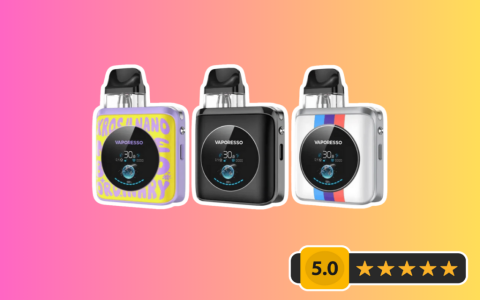American electronic cigarettes, commonly known as e-cigarettes or vapes, are battery-operated devices that heat a liquid (e-liquid or vape juice) to produce an aerosol, which is then inhaled by the user. This e-liquid typically contains nicotine, flavorings, propylene glycol, vegetable glycerin, and other chemicals.
Market Landscape
The U.S. e-cigarette market is one of the largest and most dynamic globally. It features a wide array of products, from simple disposable devices to complex, customizable mod systems. Key product categories include:

- Disposable e-cigarettes: Single-use devices, pre-filled with e-liquid, known for convenience and often available in various flavors (where legally permitted).
- Pod-based systems: Rechargeable devices utilizing replaceable pre-filled or refillable e-liquid pods. These gained immense popularity for their ease of use and compact design.
- Vape mods and tank systems: More advanced devices offering greater customization of power, temperature, and airflow. These are typically used with bottled e-liquids and cater to experienced users.
Major Players: The market includes large tobacco companies that have acquired or developed their own e-cigarette brands, alongside numerous independent vape manufacturers and retailers. Competition is fierce, with innovation in device technology and e-liquid formulations being common.
Regulatory Environment
The Food and Drug Administration (FDA) has regulatory authority over e-cigarettes in the U.S. under the Family Smoking Prevention and Tobacco Control Act. Key regulatory aspects include:
- Premarket Tobacco Product Applications (PMTAs): Manufacturers must submit PMTAs and receive FDA authorization to legally market new e-cigarette products. This process evaluates whether a product is “appropriate for the protection of public health.”
- Minimum Age of Sale: Federal law prohibits the sale of all tobacco products, including e-cigarettes, to individuals under 21 years of age.
- Flavor Restrictions: The FDA has issued enforcement policies targeting certain flavored e-cigarette products, particularly cartridge-based products (excluding tobacco and menthol flavors), to address concerns about youth appeal. Many states and localities have implemented their own, often stricter, flavor bans.
- Marketing and Advertising: Regulations govern the marketing and advertising of e-cigarettes to prevent claims that are not scientifically substantiated and to limit appeal to minors.
Consumer Trends
Consumer preferences in the American e-cigarette market continually evolve:
- Dominance of Disposables and Pod Systems: These categories, particularly disposables, have seen significant growth, often attributed to their ease of use and, in some cases, the availability of flavors not covered by certain federal enforcement priorities.
- Nicotine Strength: High-nicotine formulations, especially those using nicotine salts for smoother inhalation, remain popular among many adult users.
- Adult Smokers Seeking Alternatives: A primary driver for the market is adult smokers looking for alternatives to combustible cigarettes, although the efficacy for long-term cessation is still a subject of scientific debate and regulatory scrutiny.
- Online and Specialized Retail: While convenience stores and gas stations are significant sales channels, specialized vape shops and online retailers also play a crucial role in product availability and consumer education.
Public Health Considerations
The proliferation of e-cigarettes in the U.S. has sparked significant public health discussion and research. Key considerations include:
- Youth Vaping Epidemic: A major concern has been the sharp increase in e-cigarette use among youth and young adults, leading to intensified regulatory actions and public health campaigns.
- Health Effects: Research is ongoing to understand the short-term and long-term health effects of e-cigarette use, including cardiovascular, respiratory, and other systemic impacts. The presence of harmful and potentially harmful constituents in the aerosol is a key focus.
- Potential for Harm Reduction: For adult smokers who completely switch from combustible cigarettes to e-cigarettes, there may be a potential for harm reduction. However, this is weighed against the risks of dual-use and youth initiation.
Regulatory Focus: U.S. public health authorities and regulatory bodies strive to balance the potential benefits of e-cigarettes for adult smokers with the imperative to protect youth and non-smokers from nicotine addiction and other associated harms.










